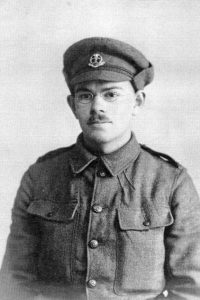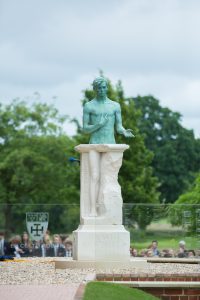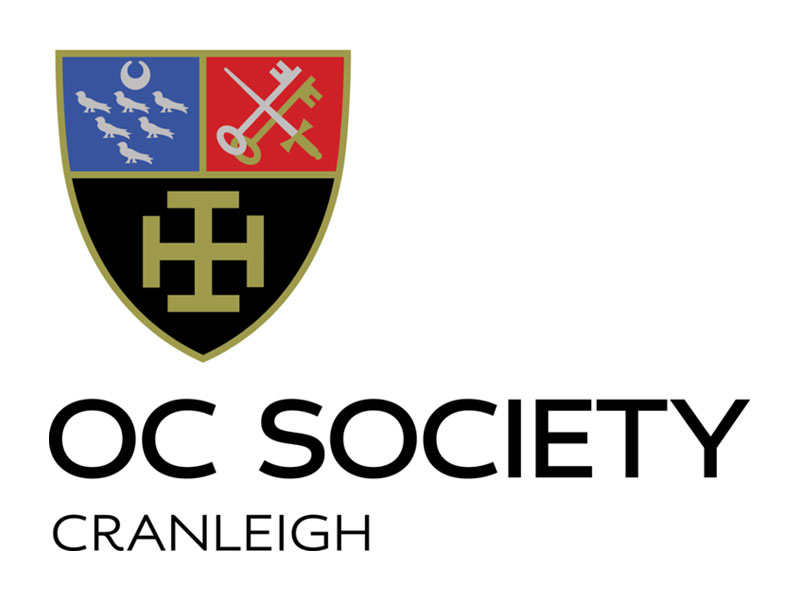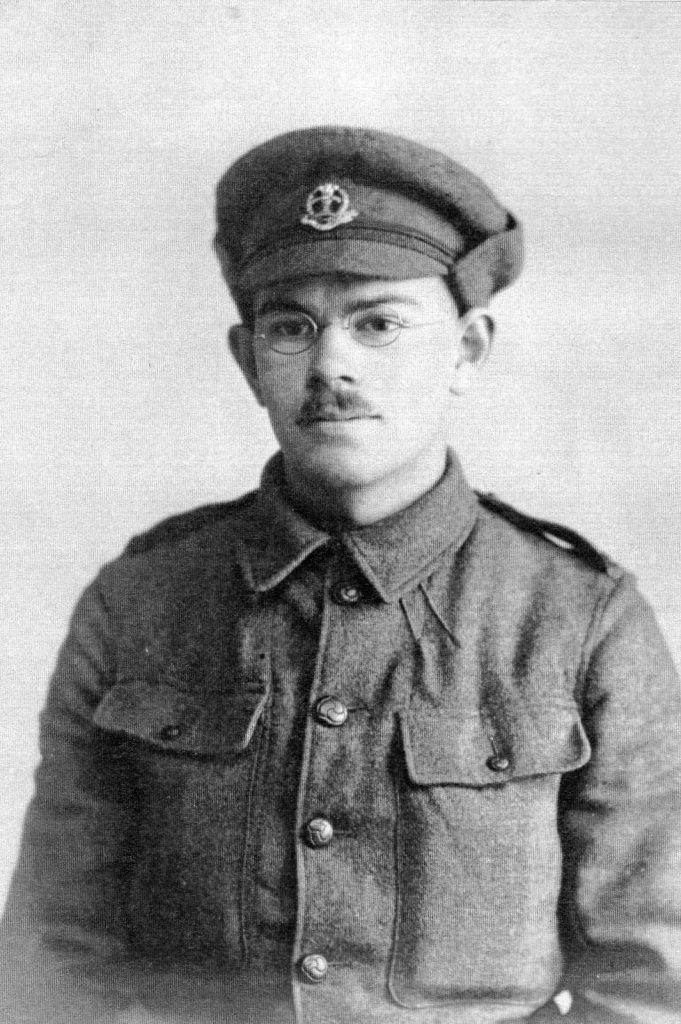
The programme for the service which preceded the unveiling of Nick Dimbleby’s magnificent sculpture included the story of one of those named on the memorial, Lionel ‘Leo’ Last (House 1906).
General the Lord Richard Dannatt’s address started and finished with references to Last who died 100 years before to the day, killed advancing towards the German lines early on July 1, 1916, the infamous first day of the Battle of the Somme. It was also his 20th birthday.
Last was one of seven brothers. One of his siblings Harold ‘Tertius’ Last (East 1905) lost his life in 1915. Tertius had joined the HAC in early 1914 and so was one of the first sent to fight. In late March 1915, four months after arriving in France, he was hit by shrapnel and left paralysed in a field hospital in Belgium. It seems likely that he would have died there but for his 25-year-old sister Dorothy. Last’s niece Bridget Sudworth explained. “Dorothy may have been a bit psychic as she had a premonition that Tertius was in trouble in March 1915 and bullied her way into getting a passage across to Belgium and found him paralysed from the neck down. She brought him home to die.” He succumbed to his wounds on April 26. He was 22.
His younger brother, Leo, who enlisted in September 1914, remained in England until the spring of 1916 when he was sent to France with the 16th Battalion Middlesex regiment – the Die Hards – ahead of that summer’s offensive. He first saw action in late April, and on June 27 received orders that the attack would commence the next day.
From the time he enlisted he exchanged regular letters with his sister. The final one written by him was on June 28 as he prepared to go into the line. It was brief and ended: “I cannot write any more, Old Girl. I am very sorry but I seem a bit jumbled up in myself, but I want you to pray for me especially in the days that are coming, that I may do my duty as I ought.”

As it was, the attack was postponed for two days. At 10.20pm on June 30, Last’s battalion reached Auchenvillers and at 7.30am the following morning, Sergeant Last was one of 660 men of ‘C’ Company who went over the top in the opening offensive of the Battle of the Somme. Only 72 attended roll-call that evening. Last was not among them. It was his 20th birthday.
His family had no news for several weeks. On July 28 his sister sent a letter pleading for him to get in touch: “You have not written to me once this term and I wrote you several times.” Eventually her letters were returned stamped ‘missing presumed dead’. His body was never found and the only account of what were Leo’s last moments came from the father of a captain in the Middlesex whose son died the same morning. “My son was hit and after he fell, he never rose again,” he told them. “Then the young sergeant (Leo) led the men as if nothing had happened and nothing more was seen of them.” Last’s body was never found. He is commemorated on the Theipval Memorial.
The family did not give up hope, placing advertisements in newspapers asking for his whereabouts. Tertius Last was listed on the original Cranleigh School memorial unveiled in 1921. As Leo’s family never notified the School of his fate, he was never so honoured.
We were pleased to be able to put that omission right a century later and also that his niece and her family made long journeys to be at the unveiling. “We were profoundly moved by the nature of the service, particularly Lord Dannatt’s address,” Mrs Sudworth said. “It was really quite extraordinary that it should be used as such a focal point and then followed by the revelation of the sculpture which somehow endorsed the whole unspeakable loss of so many thousands of beautiful young men who had barely started their lives.”

